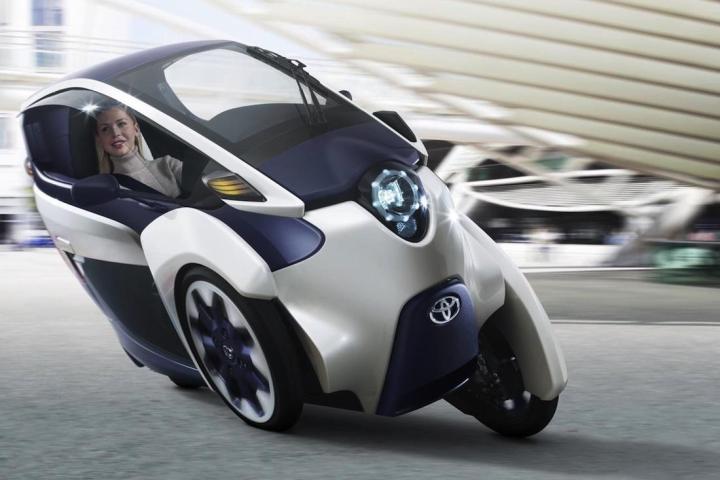
Cars like the Corolla and Camry have given Toyota a reputation for conservatism. The company’s latest product may change that.
Toyota says it will put the three-wheeled, electric i-Road into production. Don’t expect to see one Stateside anytime soon, though: It will be used primarily by Toyota’s Ha:mo car-sharing service in Japan.
The i-Road was unveiled at the 2013 Geneva Motor Show, and it hasn’t gotten any less strange since.
A 2.7-horsepower electric motor and lithium-ion battery pack power the two front wheels. At around 660 pounds, it’s more like a bike than a car. Yet it has a roof and a steering wheel.
Despite its three-wheeled configuration, the i-Road can actually lean into corners like a two-wheeled bike, thanks to its nifty “Active Lean” suspension system.
The i-Road’s party piece automatically balances it during cornering, making it much easier to operate, according to Toyota.
A computer calculates the correct amount of lean based on steering angle, vehicle speed, and a gyroscopic sensor. It controls an actuator, which moves the wheels up and down accordingly.
On the more practical side, the i-Road has tandem seating for two, and gets about 31 miles of range per charge. Top speed is 28 mph and, considering that it has the frontal area of a Cobra gunship, we wouldn’t be shocked to see one illegally threading between lanes of traffic on a crowded Tokyo street.
The i-Road’s introduction will coincide with an expansion of the Ha:mo car sharing service, which has been operating in Toyota City since October 2012.
Toyota envisions Ha:mo as a prototype for a future urban transportation system that seamlessly integrates personal vehicles and public transit.
Ha:mo provides users with multi-modal routing information that accounts total carbon dioxide emissions and current traffic conditions, planning the most efficient routes possible, Toyota says.


